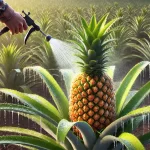Introduction to Pineapple Cultivation
Pineapple (Ananas comosus) is a tropical crop of great economic importance worldwide. Its management requires a combination of proper agronomic techniques to maximize production and ensure fruit quality. This article covers the best practices for pineapple cultivation, from land selection and soil preparation to harvest and post-harvest handling.
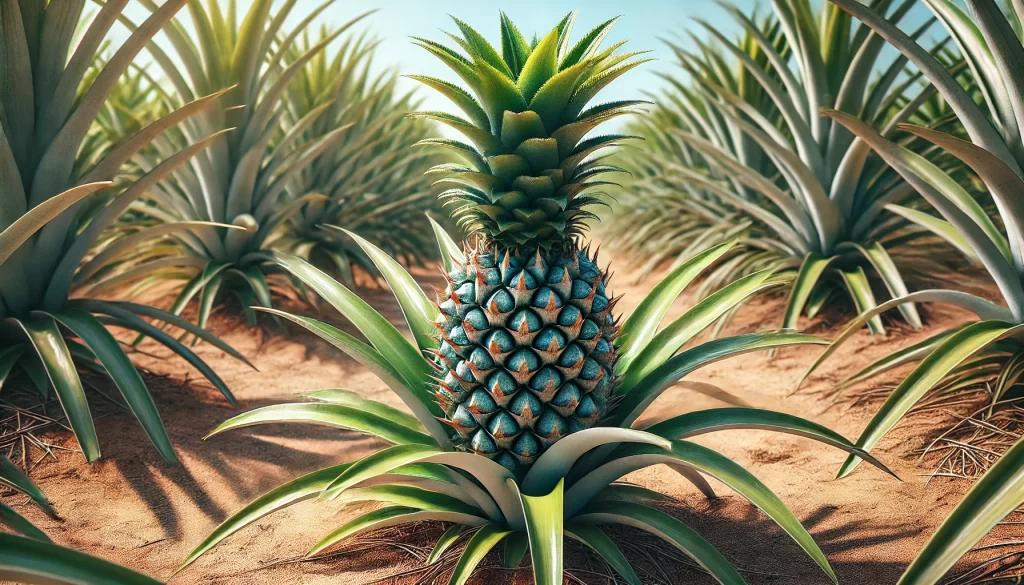
Land Selection and Ideal Climate
Climate Requirements
Pineapples thrive in warm, humid climates with optimal temperatures between 22°C and 30°C. They are sensitive to frost and prefer areas with an altitude not exceeding 800 meters above sea level. The ideal rainfall ranges from 1,000 to 1,500 mm annually, evenly distributed. Good drainage is essential, as excess moisture can lead to rot problems.
Soil Selection
The ideal soil for pineapple cultivation is sandy or sandy-loam, with good drainage and a slightly acidic pH, between 4.5 and 5.5. Clay or compacted soils are not recommended due to their water retention capacity, which can lead to root diseases. Adding organic matter improves soil structure and facilitates root development.
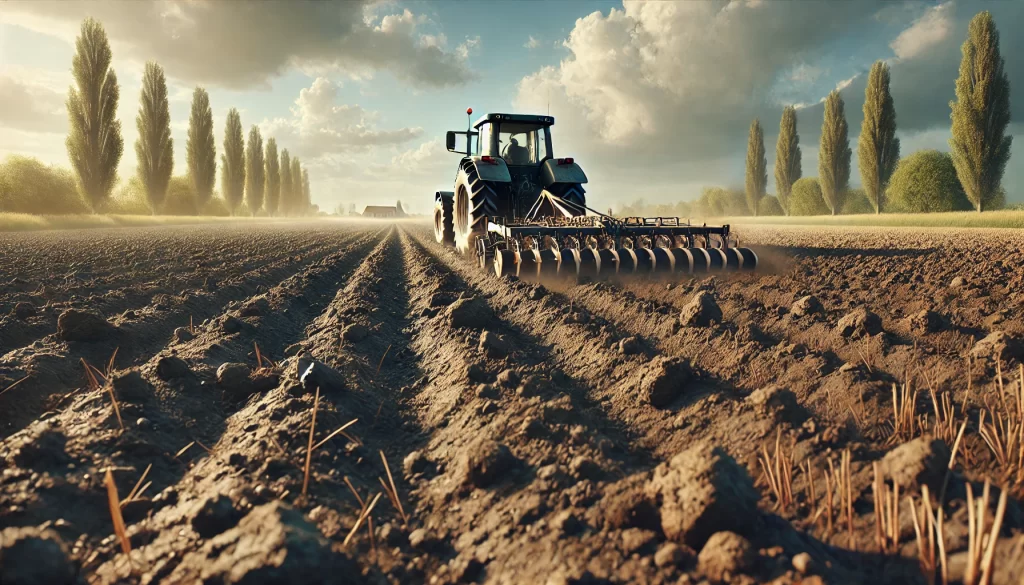
Soil Preparation and Planting
Soil Preparation
Soil preparation begins with the removal of weeds and residues from previous crops. It is important to perform deep plowing to loosen the soil, followed by harrowing to level and remove large clods. Soil analysis is crucial to adjust the pH and determine initial fertilization needs.
Planting Methods
- Crowns, Slips, or Suckers: Pineapple planting can be done using crowns (top part of the fruit), slips (small plants that grow around the base of the mother plant), or suckers (shoots that grow in the leaf axils).
- Planting Density: A spacing of 80 cm between rows and 30 cm between plants is recommended, giving an approximate density of 45,000 to 50,000 plants per hectare.
Pineapple Nutrition and Fertilization
Nutritional Requirements
Pineapples need a proper balance of nutrients to develop optimally:
- Nitrogen (N): Promotes vegetative growth and is essential during the early stages of the crop.
- Phosphorus (P): Supports root development and flowering.
- Potassium (K): Improves fruit quality, increasing its size, sweetness, and disease resistance.
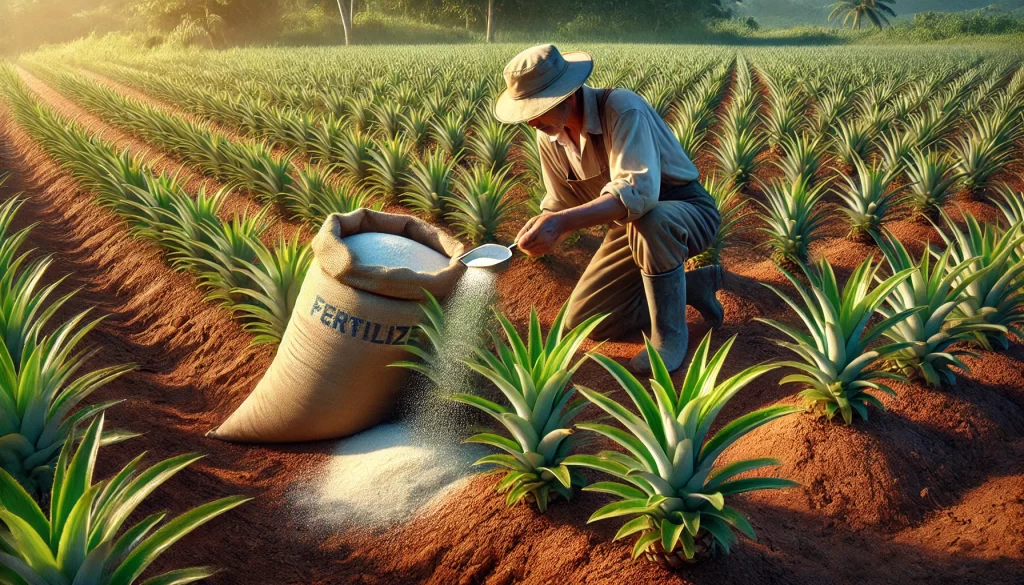
Fertilization Strategies
- Base Fertilization: Apply phosphate and potassium fertilizers before planting, incorporating them into the soil.
- Maintenance Fertilization: Apply nitrogen fertilizers, such as urea, at regular intervals during vegetative growth. Foliar fertilizers can also be used to correct specific deficiencies.
- Organic Amendments: The application of compost or well-decomposed manure improves soil structure and increases nutrient availability.
Pest and Disease Control
Common Pests
- Pink Pineapple Mealybug (Dysmicoccus brevipes): A sucking insect that can transmit the pineapple wilt virus.
- Control: Constant monitoring and application of specific insecticides. Use of natural enemies like parasitoid wasps.
- Nematodes: Affect the roots, causing thickening and deformation.
- Control: Crop rotation and use of biological or chemical nematicides.
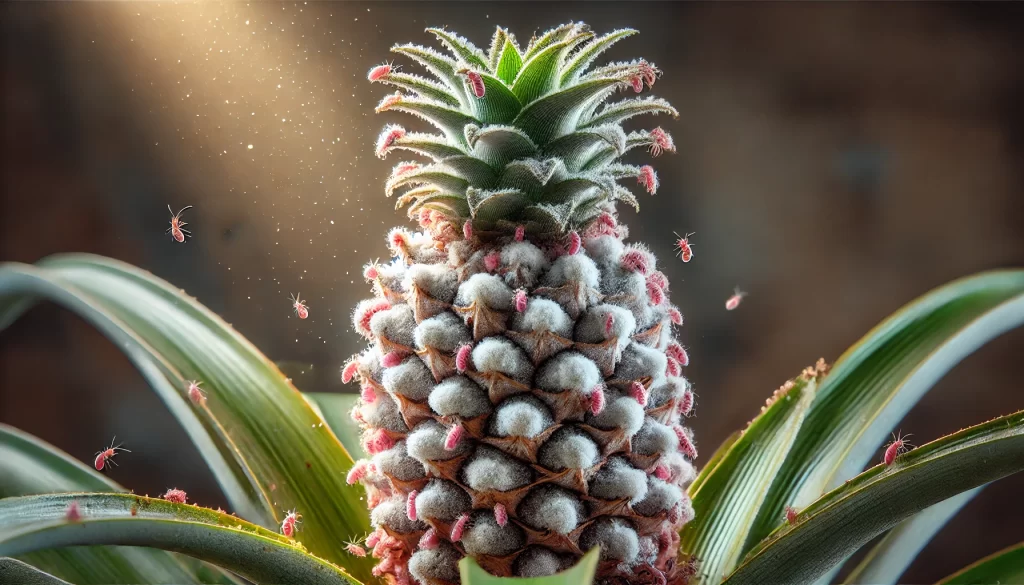
Common Diseases
- Heart Rot (Phytophthora spp.): Causes rot in the stem and heart of the plant.
- Control: Use of systemic fungicides and improved soil drainage.
- Anthracnose (Colletotrichum gloeosporioides): Causes black spots on leaves and fruits.
- Control: Application of preventive fungicides and proper water management.
Irrigation Management
Water Requirements
Pineapples require adequate irrigation to maintain consistent soil moisture. They are sensitive to both excess and lack of water. The most recommended irrigation methods include:
- Drip Irrigation: Maintains a constant water supply in the root zone, optimizing water use and minimizing evaporation.
- Sprinkler Irrigation: Useful for large areas, but must be well-managed to avoid waterlogging.
Irrigation Scheduling
Irrigation should be adjusted according to the growth stage of the pineapple. Water needs are higher during the flowering and fruit formation stages. The use of tensiometers or moisture sensors can help determine when irrigation is needed.

Additional Cultural Practices
Weed Control
Weeds compete with pineapple plants for nutrients and water. The use of organic mulches like straw or plastic is recommended to reduce weed growth and conserve soil moisture.
Defoliation and Sucker Removal
Defoliation (removal of old leaves) and sucker removal (removal of side shoots) are essential practices to ensure nutrients are concentrated in the main fruit and improve harvest quality.

Harvest and Post-Harvest
Maturity Indicators
Pineapples are ready to be harvested when the fruit color changes from green to golden yellow, and the smell is sweet and fragrant. Harvesting must be done carefully to avoid damaging the fruit.
Harvesting Techniques
A machete or sharp tool is used to cut the fruit along with a small portion of the stem. It is important to handle the fruits carefully to avoid damage that could affect quality during transport and storage.

Post-Harvest Handling
- Grading and Selection: Fruits are graded according to their size, shape, and absence of defects.
- Storage: Pineapples should be stored at temperatures of 7°C to 10°C with a relative humidity of 85-90% to prolong their shelf life.
- Packaging: Fruits are placed in cardboard or plastic boxes with enough ventilation to prevent ethylene buildup.
Pineapple Marketing
Pineapples are marketed both in local and international markets. Producers must ensure they meet the quality standards and phytosanitary regulations of the importing country.
- Certifications: Obtaining certifications such as GlobalGAP or Fair Trade can open opportunities in premium markets.
- Value Addition: Transforming pineapples into products like juices, preserves, or dried pineapples can increase producers’ income.
 AgronoBlog – Agriculture Blog
AgronoBlog – Agriculture Blog 

